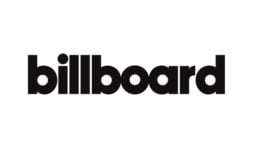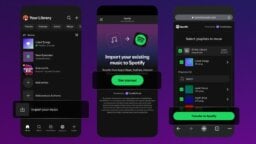In the spin-heavy world of music streaming, you’ll no doubt hear both of the above arguments convincingly portrayed in the coming days.
The trigger for their arrival will be the first factual nugget regarding Apple Music‘s performance: earlier today, Apple‘s Eddy Cue revealed that the platform has attracted 11 million sign-ups in its first five weeks.
That equates to around 315,000 new ‘subscribers’ per day – although none of them are paying… yet.
Cue noted that 2 million of these users had opted for Apple Music’s family plan, which allows up to six members of a household to enjoy full access to Apple Music for just $14.99 per month.
So are these numbers a hugely positive first step for Apple, or evidence that the industry’s great hope to accelerate paid-for streaming’s growth around the world has been a damp squib?
Before ingesting the cavalcade of inevitable pro- and anti-Apple propaganda, here are some things to consider:
- In the context of music streaming’s existing audience, Apple is off to a flyer. If (and this is a huge if) its current user base don’t cancel their accounts in two months’ time, Apple Music will have more paid for subscribers than Deezer (6m), Napster/Rhapsody (3m) and Tidal (under 1m) combined. If you continue to hold that large pinch of salt we just gave you in your palm, Apple Music’s ‘subscribers’ are already halfway as large as the number of people paying for Spotify around the world (20m);
- In the context of music streaming’s potential audience, Apple is off to a bumpy start. Last year, the company revealed the staggering fact that it now had 800m registered iTunes accounts around the world, with the vast majority linked to credit cards. Apple Music’s current user base represents just 1.5% of this audience. Which if we were spinning into an unfair anti-Apple headline (as if this toxic internet of ours doesn’t have enough), would go something along the lines of: ‘Apple fails to convert 98.5% of iTunes customers into Apple Music users.‘
- There is no solid way of knowing how much revenue this free trial is currently paying into record company / publisher coffers, but we can have a good ol’ guess. First, let’s work out roughly how much an active streaming user actually streams: Spotify’s engineering team recently said that the platform processes ‘nearly 1bn streams’ every day. Divide that by Spotify’s total active user base of 75m, and it’s seeing around 13 plays per person, per day. If Apple Music has emulated this level of interest from its users, it will be seeing around 143m streams every day. Indie labels are understood to have negotiated a $0.002 (pre-tax) per stream royalty deal with Apple for a user’s trial period. (It’s unclear if this figure includes publishing royalties.) Based on this, Apple Music will currently be paying out somewhere in the region of $286,000 to music rightsholders each day, and around $10m in total so far.
- Don’t forget, though, that if these users convert into paying subscribers in a couple of months’ time, that figure will jump up significantly. Apple has agreed to pay pay 71.5% of Apple Music subscription revenues to music rights-holders in the US, and 73% outside the US. Around 58% of revenue will be paid to labels and artists, with the remaining 13.5%/15% going to publishers/songwriters.
- Apple reportedly wants 100m subscribers to join Apple Music by the end of 2015. To get there, it’s going to have to increase its free trial sign-ups tenfold. Also, the number that Eddy Cue’s just announced will have received a big marketing boost by Apple Music freshness on June 30. It was new and shiny then. It’s not now. Now the real hard work, of convincing people that music streaming is something they need in their life when they’ve resisted so far, has to be done – and that means spending big bucks on a worldwide marketing campaign. Particularly when download numbers aren’t being gravely affected by Apple Music – suggesting that millions of iTunes fans aren’t ready to quit their ownership habit for a music rental model just yet. The music biz, of course, will be rather conflicted on whether it wants these customers to migrate at all…
- Apple CEO Tim Cook told us a few weeks back that 15,000 artists were interacting with Apple Music’s direct-to-fan channel Connect. These artists will have been excited to try something new. But now they know they are speaking to a total audience of 11m. Instagram has 300m monthly active users. For Twitter, it’s 316m. For Facebook, it’s 1.44bn. Problem?
- The biggest question of all for Apple is how many users will retain their Apple Music accounts after the trial – so all eyes on October. Of course, at this stage, even guesswork is pretty pointless: a universally-available 3-month free trial to a music streaming service has never been launched before. Plus, these users have already given their payment approval and details to Apple; they have to actively cancel their accounts, which Apple isn’t making an easy job. Then again, as Spotify can attest, just because someone likes you when you’re free, it doesn’t naturally follow that they’re going to chip you some change. Whatever the outcome for Apple Music in October, by giving away its free trial numbers now, Eddy Cue has made a rod for Apple’s back if users start dropping the service in eight weeks time…
- The Android version of Apple Music still isn’t here. This is weird one for Apple: giving away its prized first-party apps to bitter rival Google is not really in its DNA. But there are more than a billion active Android devices being used worldwide – and Apple Music clearly needs a bigger audience. Apple says the Android app is still in development and due for release in the autumn/fall. Will it be deliberately restrictive/pricey/off-putting? If Apple truly wants to win the streaming war with Spotify, it can’t really afford to take that kind of gamble. If it’s solely focused on winning the device war, it still might.
- Apple has shown a fresh willingness to sign up Apple Music to telco bundle deals with Telstra in Australia. Agreements like this have been crucial to accelerating Spotify’s paying user base over the magic 20m mark. When people are in a phone shop, any additional Apple trinket for ‘free’ would give them something tempted to play with on their shiny new phone on the bus home…
- The Apple Music numbers don’t tell us how many users are nibbling on a single account’s family plan. With 2m people signed up to this generously-structured version of the subscription, Apple could feasibly have 10m more ‘listeners’ right now than its 11m figure suggests…
- In September (ish), Apple may well announce a new iPhone. An iPhone 7 could even be on the cards, and even Apple fanboys love nothing more than that magical numerical ticking up by a digit. The last new iPhone model, iPhone 6/6+, sold 10m units in its first three days on sale and has broken records since.
- One very, very, very important stat to remember: according to the IFPI, the global music industry only attracted 41m paying streaming subscribers in 2014. Apple Music’s free-so-far triallists are already a quarter of the way towards that figure in five weeks.
- Then again, recent stats out of the UK suggest that many of Apple Music’s new users have merely migrated from other services, rather than diving into music streaming for the first time. The music business will have its fingers crossed that this is not the case worldwide…
Music Business Worldwide





